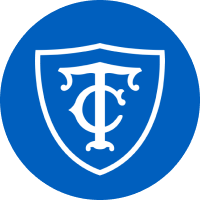Archival Exercises: A Lens On Underrepresented / Marginalized Histories

In this portion of the presentation for Dr. Ami Kantawala's class, Historical Foundations of Art Education, we will search for, examine, and discuss select digital materials that represent the landscape of underrepresented and marginalized histories. Our exercises are drawn with inspiration from notable alumni of Teachers College who contributed to the flowering of arts during the Harlem Renaissance, or New Negro Movement, a term popularized by Alain LeRoy Locke's anthology, The New Negro: An Interpretation (New York: Albert & Charles Boni, 1925), which includes book decorations by Winold Reiss.
In preparation also see the following guide, Be a Detective: Art, Artifacts, and Artful Historical Research.
Artist-Teachers / Teacher-Artists
While the following persons became well-known figures in the Harlem Renaissance, they are of the generations that would struggle see the fruition of Civil Rights Movement, a decades-long movement by African-Americans and their allies to end systemic racism and racial segregation in the United States -- and one that would re-purpose in the more recent Black Lives Matter.
- Charles Henry Alston [Spinky] (1907-1977)
- Gwendolyn Bennett (1902-1981)
- Aaron Douglas (1899-1979)
- Alma Thomas (1891-1978)
- James Lesesne Wells (1902-1993)
Tools
- Archive Grid, a network of archival collections held by libraries, historical societies, museums, and archives
- Archives of American Art - Smithsonian Institution - the largest collection of primary resources documenting the history of the visual arts in the United States. More than 20 million items of original material are housed in the Archives' research centers in Washington, D.C. and New York City.
- New York Public Library Digital Collections, contains 901,739 items digitized from The New York Public Library's collections, and described as "a living database with new materials added every day, featuring prints, photographs, maps, manuscripts, streaming video, and more"
- Pocketknowledge, the digital archive of Teachers College, Columbia University which contain rare and original items, many of which can be found only at Teachers College. The scope includes: primary sources, dissertations, and media from some of the most influential figures in education, psychology, and health.
Prompts
Read and analyze the letter from Romare Bearden to Charles Henry Alston
(Archives of American Art)
Locate the source of the photographs used on the cover of this book:
Wheeler, Belinda and Louis J. Parascandola, eds. Heroine of the Harlem Renaissance and Beyond: Gwendolyn Bennett's Selected Writings. University Park, PA: Pennsylvania State University Press, c2018.
(NYPL Digital Collections)
Name three primary holders of the Aaron Douglas Papers. Describe a finding aid for one.
(ArchiveGrid)
Locate reproductions of Aspects of Negro Life in the Painting and Sculpture Collection of NYPL Digital Collections; describe the significance of this work and where the murals are actually located.
View the finding aid for the Alma Thomas Papers. Look at select digitized items and read the letter from Alice C. Harrod to Alma Thomas and tell us what it reveals about the artist's childhood and the writer's views on education.
(ArchiveGrid, Archives of American Art)
Describe courses in the School of Practical Arts, Department of Fine Arts at Teachers College in 1927. What courses do you think James Lesesne Wells might have taken?
(Pocketknowledge, hint)
Images:
- Capital Letter A, by James Tissot, Courtesy of Brooklyn Museum
- Packing Up Pearl Greenberg's Papers for TC Special Collections, Courtesy of the Gottesman Libraries, Teachers College, Columbia University

